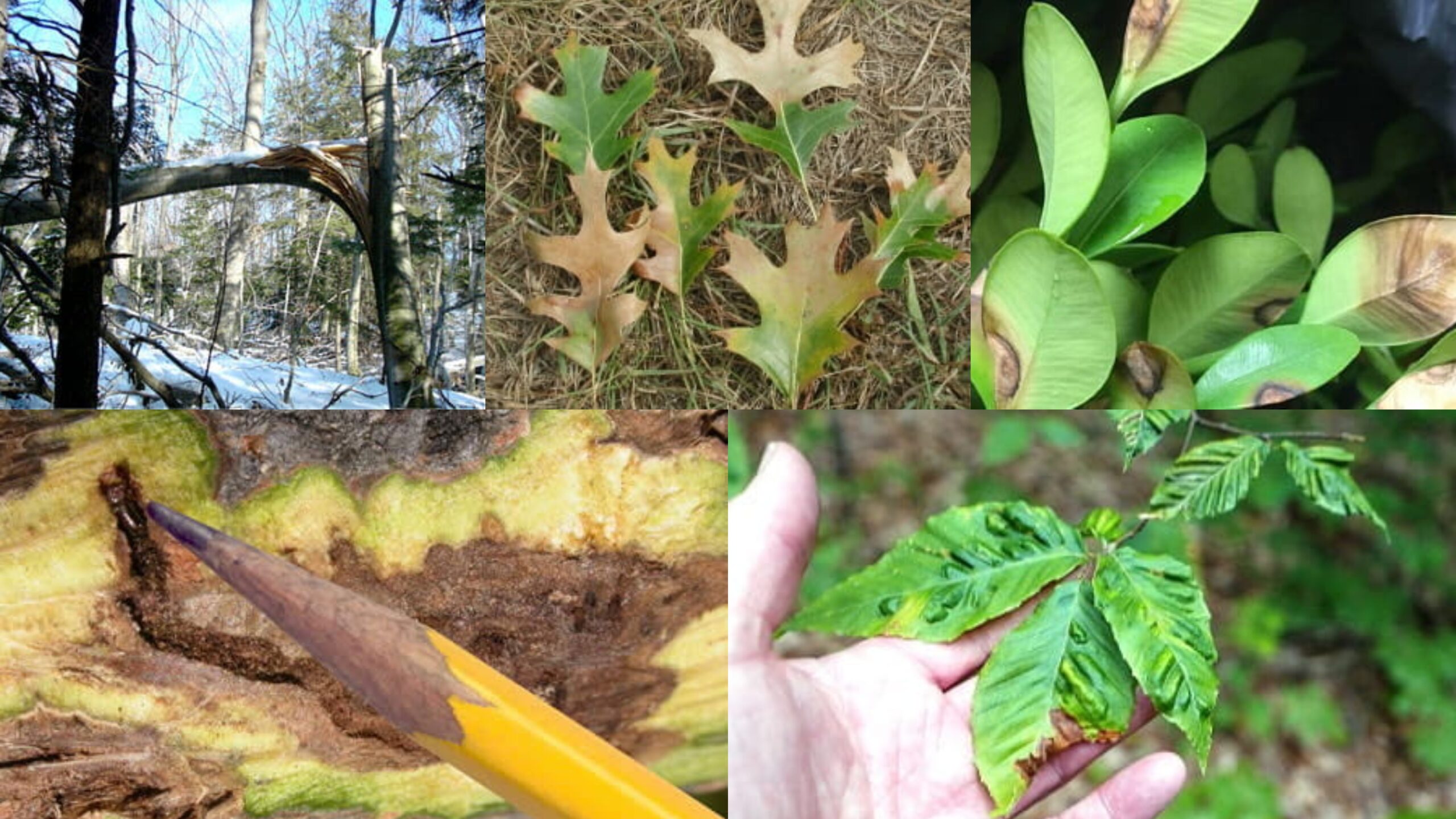Michigan residents take great pride in our trees and visitors regularly flock to The Wolverine State to see the leaves change colors each fall. With all of the love for trees, it’s important to learn how to identify the Michigan tree diseases that can threaten the livelihood of your leafy investments.
Tree diseases can be difficult to spot and can take years to show symptoms. If not remedied in time, these diseases can kill your tree completely.
Read on to learn more about how to identify the most common diseases and how to treat them from the experts at One Call Tree Service.
Michigan Tree Diseases: 4 Main Types
There are 4 main types of Michigan tree diseases:
- Oak Wilt
- Needle Cast
- Tree Cankers
- Anthracnose
Michigan Tree Diseases: Oak Wilt
Known for their strength and durability, even mighty oaks are vulnerable to tree diseases. Caused by a fungus that rides along sap-feeding beetles, oak wilt is bad news for any oak tree.
Additionally, beetles that feed on sap are attracted to the sweet stuff that seeps from oak tree wounds, and they carry this fungus from tree to tree that eats away at the tree from the inside.
Oak wilt is a fast-moving, lethal fungus that can kill red oak trees in as little as 4 to 6 weeks and white oaks in 1 to 6 months.
To minimize the threat or spread of oak wilt, avoid pruning your oak trees unless it’s early spring or late fall when your trees are dormant.
Michigan Tree Diseases: Needle Cast
Named for the part of the tree that it attacks, needle cast disease is common throughout the Midwest. It’s a foliage disease that affects spruce trees by infecting their needles and spreading quickly from tree to tree. Because blue spruce trees aren’t native to Michigan, they are more susceptible to diseases outside of its habitat.
The most obvious sign of needle cast is branch dieback. The disease begins in the inner, lower branches and works its way to the rest of the tree over several years. As the disease progresses, the tree becomes thinner and thinner each year until so many needles are lost that the tree dies.
You can identify needle cast by looking for lines of small black dos along the surface of needles. While fungicide may help control the disease the best course of action is to remove all infected trees to stop the disease from spreading.
Michigan Tree Diseases: Tree Cankers
A tree canker is an indicator that your tree is suffering from an infection. Tree cankers are caused by a fungus that infects wounded or stressed trees. Symptoms include oozing sap, discoloration, sunken areas. Keep your trees healthy and stress-free to reduce the chances of tree cankers.
If your Mid Michigan trees have cankers, the infected areas should be pruned. Do not prune during wet or humid weather as this can spread the fungus to other branches or trees. Always sterilize your equipment after use.
Michigan Tree Diseases: Anthracnose
Anthracnose is one of Michigan’s most common tree diseases and can infect oak, maple, ash, sycamore, and many other species. The fungus creates dead spots on leaves that disrupt the photosynthesis process. This can lead to early defoliation, which can stress the tree and make it vulnerable to other diseases.
Furthermore, anthracnose is a fungus that thrives in moist, cool climates which is why it is so prevalent in Michigan. It continues to spread each year and can severely damage or stunt the growth of the tree. Signs of anthracnose can be seen In the late fall and early spring as black bumps on leaves. Spores are released and dispersed by wind or rain to other branches and nearby trees.
The best course of action for ridding your trees of anthracnose is to prune out and destroy dead branches and twigs. You should also rake and destroy fallen leaves around susceptible trees that have branches close to the ground.
Michigan Tree Diseases: Call the Experts at One Call Tree Service
If you notice your trees look a little weak or weary, you should immediately call a professional arborist. Trust your trees with One Call Tree Service.
We offer many tree and shrub care services like trimming, pruning, tree removal, and stump grinding for the entire Mid Michigan region & beyond.

